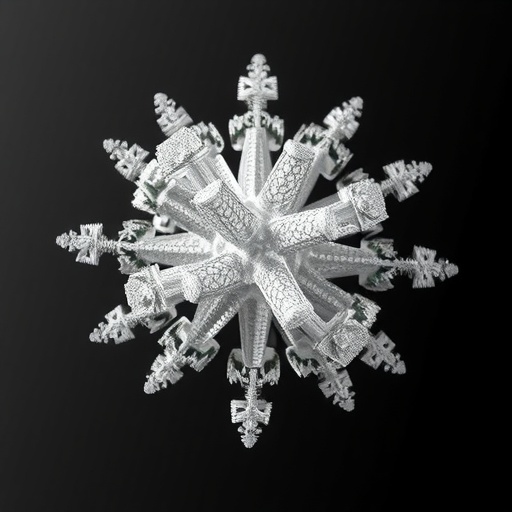Titanium (Ti) has long been celebrated in the biomedical field for its exceptional properties, particularly its lightweight nature, remarkable corrosion resistance, and excellent biocompatibility. However, one significant drawback has impeded its wider application in orthopedic implants: poor wear resistance. This issue stems from titanium’s inadequate plastic shear-resistance and strain-hardening capacity, which leads to premature failures during joint friction—a serious hurdle for many applications in this demanding field. Traditional methodologies aimed at strengthening titanium often compromise its inherent safety and biocompatibility, raising challenges for the development of wear-resistant titanium orthopedic implants.
The challenge lies in manufacturing implants that maintain a fine balance between strength and plasticity. The Archard law highlights that wear resistance is intrinsically linked to both of these properties, yet a trade-off exists that can compromise one for the other. The quest for a solution has focused on enhancing the synergy between strength and plasticity in pure titanium, marking a pivotal step towards superior wear-resistance. Researchers have recently turned their attention towards the innovative concept of heterostructures—designs inspired by natural materials that consist of zones with significantly varying mechanical, physical, or chemical attributes. This approach harnesses the complementary benefits of these heterogeneities, allowing for a pronounced synergistic effect where the integrated properties surpass predictions made through standard mixing rules.
The pursuit of a heterogeneous arrangement in titanium implants encompasses the imperative challenge of precise control over the evolution of size and distribution in these regions. This necessitates advanced techniques in order to achieve the desired mechanical properties that define high-quality, wear-resistant implants. Addressing this, a new research initiative led by Professor Cijun Shuai and Professor Chengde Gao from Central South University proposes a groundbreaking manufacturing methodology, integrating mechanical milling (MM) and laser powder bed fusion (LPBF) techniques. This innovative fusion leads to the creation of a highly tunable spatial heterostructure within pure titanium, capitalizing on the synergistic benefits offered by multi-scale structures.
The implementation of this dual-approach methodology enables a significant refinement of the grain size in titanium powders, which is critical for enhancing their mechanical properties. By subjecting the powder particles to a controlled energy input during the MM pre-treatment phase, researchers can induce gradient plastic deformation. This results in the formation of titanium powders characterized by a unique core-shell structure, where an ultra-fine-grained shell surrounds a coarse-grained core, along with the presence of pre-existing dislocations. The subsequent employment of the LPBF process facilitates the consolidation of these core-shell structured powders into highly effective titanium implants.
LPBF technology, recognized for its intelligent manufacturing capabilities, meets the intricate requirements for producing high-performance components through its ability to create complex geometries. The rapid melting kinetics and localized heating characteristics inherent in LPBF technology work synergistically with the UFGed structures established during the MM pre-treatment. The outcome is a harmonic heterostructure that provides a robust platform for the enhancement of wear resistance in titanium implants.
Essentially, this harmonic heterostructure initiates mechanisms of hetero-deformation-induced (HDI)-strengthening and additional HDI-hardening. These cascades of mechanical reinforcement enable an exceptional strength-plasticity synergy that is critical for the adverse conditions experienced by orthopedic implants. Concurrently, the back-stress produced by geometrically necessary dislocation (GND) pile-up plays a pivotal role in mitigating the adverse effects of wear shear-stress, which otherwise compromises the longevity of the implant.
The results reveal a groundbreaking approach to the dilemma of wear resistance in titanium implants. By skillfully combining mechanical milling and laser powder bed fusion, researchers have not only proven the potential of developing new heterostructures but have also opened avenues for the manipulation of structural heterogeneity. This strategy stands as a beacon of hope, providing fresh insights into how the strength-plasticity conundrum can be resolved, leading to the creation of cutting-edge medical implants that promise enhanced durability and performance.
These findings are not just incremental; they mark a significant leap forward in the field of biomedical engineering. The synergistic relationship unearthed between strength and plasticity in titanium could revolutionize orthopedic implant applications, hence offering an essential improvement for patient safety and implant longevity. The newly developed heterostructured titanium implants exhibit impressive performance metrics, establishing themselves as frontrunners in the quest for next-generation orthopedic solutions. As interest from the biomedical community surges, the potential for commercial application and further research in this area may pave the way for the future of implant technology.
The practical ramifications of this study stretch beyond simple enhancements in wear resistance. With a new understanding of material manipulation and structural design, the research team envisions a landscape where medical implants can evolve to better meet the demands of clinical application and patient health. The innovative methods presented could eventually become a standard procedure in the manufacturing of not just orthopedic implants but a vast array of biomedical devices, fundamentally transforming the field.
In conclusion, the synthetic methodology eminent in this research encapsulates the blend of traditional metallurgical practices with modern additive manufacturing technologies, showcasing the potential for monumental advancements in medical implant technology. As we move forward, the implications of this work stand to benefit countless individuals in need of orthopedic solutions, revolutionizing how we approach implant design and the materials that comprise them.
Subject of Research: Wear-resistant Titanium Orthopedic Implants
Article Title: Harmonic heterostructured pure Ti fabricated by laser powder bed fusion for excellent wear resistance via strength-plasticity synergy
News Publication Date: 24-Sep-2025
Web References: DOI Link
References: N/A
Image Credits: Desheng Li, Chengde Gao, Cijun Shuai
Keywords
Titanium, Biomedical Implants, Wear Resistance, Mechanical Milling, Laser Powder Bed Fusion, Heterostructures, Strength-Plasticity Synergy, Orthopedic Applications.
Tags: additive manufacturing techniquesadvanced manufacturing for implantsbiocompatibility of titaniumbiomechanical properties of titaniumheterostructures in biomaterialsimproving wear resistance in biomaterialsinnovative materials for orthopedic applicationsorthopedic implant design challengesprecision control in additive manufacturingstrength versus plasticity in materialstitanium orthopedic implantswear resistance in titanium





